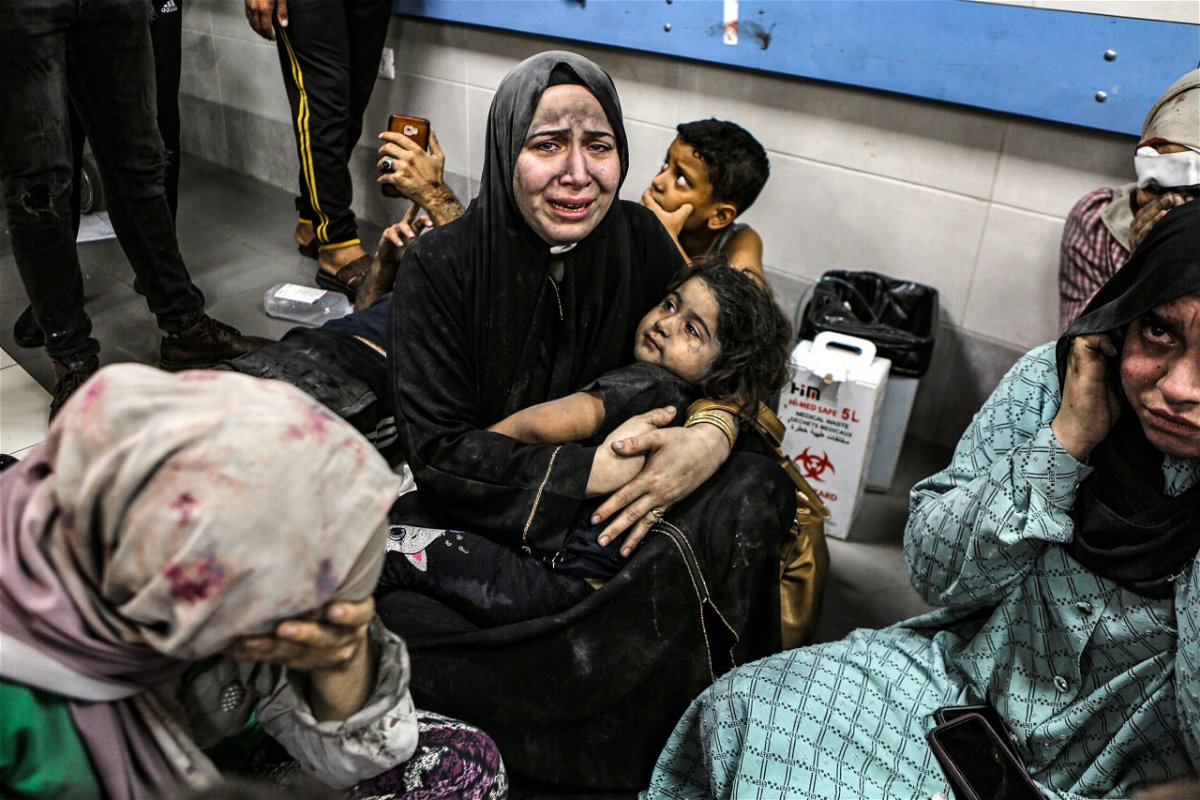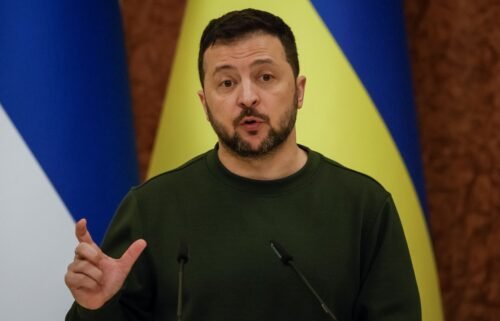These charts show the scale of loss in the Israel-Hamas war

Wounded Palestinians sit in al-Shifa hospital in Gaza City
(CNN) — It is a month since Hamas launched its unexpected and brutal attack on Israel. More than 1,400 Israelis were killed in the assault, and more than 240 were taken hostage, according to a count by Israeli officials. The Ministry of Health in Ramallah says more than 10,000 Palestinians have died in the military campaign launched in response by Israel.
Palestinian authorities don’t make a distinction between combatants and civilians but vulnerable groups — children, health workers and journalists — are among those who make up much of the grim and still growing death toll.
The conflict began when Hamas militants launched their deadly cross-border surprise attack on Israel on October 7, in what has been described as the deadliest massacre of Jews since the Holocaust. In response, Israel responded with air and land attacks on the Gaza Strip, which have resulted in 10,305 deaths, according to a spokesperson for the Palestinian Ministry of Health in the besieged enclave. CNN cannot independently verify the numbers released by the ministry.
Thousands more Palestinians have been killed in Gaza in the last month than those who died in conflicts with Israel over the last 15 years.
Children are nearly half of all casualties
Gaza has one of the youngest populations in the world, with 47% under 18 years old, and the health ministry is reporting that as of November 6, 4,104 children have been killed. UN officials estimate that as of November 5, about 1,270 children have been reported missing and may be trapped under rubble.
If the health ministry numbers are correct, the number of children killed since the conflict began has exceeded the number killed annually in armed conflicts globally in the past four years, according to UN data.
By comparison, 477 children died in Ukraine in 2022, and 83 have died this year as of October 8, according to reports compiled by the UN High Commissioner for Human Rights.
In the densely populated Gaza Strip, home to more than 2 million people, airstrikes have forced about 1.5 million people — about two-thirds of the population — to flee their homes, according to UN figures.
The Israeli Defense Forces (IDF) told people in the northern part of the Gaza Strip to evacuate to the south on October 13. Hospitals, shelters, schools and refugee camps are overwhelmed. A lack of electricity, fuel, food and clean water is creating a humanitarian crisis, UN officials have warned.
On October 31, an Israeli airstrike targeting Hamas commanders and infrastructure in Gaza’s largest refugee camp, Jabalya, left catastrophic damage and killed many. The camp in northern Gaza was bombed for the second time the next day, killing at least 80 people, according to the director of Gaza’s Indonesian hospital. According to a statement by the IDF, the initial airstrike killed several Hamas members, including Ibrahim Biari, whom it described as one of the Hamas commanders responsible for the October 7 attack on Israel. Hamas denied one of its leaders was present.
Attacks on health care
Attacks on health care can include incidents such as an Israeli airstrike that hit an ambulance outside the Al-Shifa hospital, the largest health facility in Gaza, which Israel said was directed at a Hamas cell. At least 15 died and 50 were wounded, according to the Hamas-run authorities in Gaza.
Health care attacks tracked by the World Health Organization can also include threats and efforts to prevent people from accessing care, removal of health care equipment, and other forms of violence that affect health care.
A deadly blast at the Al-Ahli Hospital in Gaza resulted in a large number of casualties. Both the cause of the blast and casualty figures are contested – the Gaza health ministry said 471 died, while an initial US intelligence assessment said the number of dead was between 100 and 300. Palestinian officials and some Arab leaders blamed an Israeli airstrike, but Israel said it was the result of a misfired rocket from the Islamic Jihad militant group, a rival to Hamas. A forensic CNN investigation concluded the blast was likely the result of a rocket fired from inside Gaza.
Ukraine experienced nearly 600 attacks on health care in March and April 2022, the first full months after Russia launched its attack on that country, according to WHO data. By comparison, there have been more than 200 such attacks in occupied Palestinian territory since October 7, but far more people have died.
The Palestinian Ministry of Health in Ramallah has reported 192 health workers have been killed and 113 health-care facilities hit. UN officials said 14 hospitals and 51 primary health-care centers are out of service as of November 6, due to damage from airstrikes or a lack of fuel.
‘There is absolutely no safe space’ for journalists
As of November 6, the Committee to Protect Journalists has tracked 37 deaths of journalists and media workers in occupied Palestinian territory since Oct. 7, making it the deadliest period for journalists covering conflict since CPJ began keeping its numbers in 1992.
“There isn’t any real precedent for this,” said Arlene Getz, the editorial director at CPJ.
The single deadliest event for professional journalists was the Nov. 23, 2009, killing of 58 people in Ampatuan town, Maguindanao, in the Philippines; 32 of those were journalists and media workers, according to the CPJ.
“It just feels like there is absolutely no safe space,” Getz said. “It’s dangerous to go to a refugee camp to report, places that used to be safe to go to.”
CPJ is counting deaths of working journalists and media workers in the region as related to their line of work, which is the same way it handled the killing of journalists in Ukraine beginning in 2022. By comparison, 13 journalists were killed in 2022 in Ukraine.
Getz said CPJ sometimes struggles to confirm deaths because they frequently rely on family members for verification.
“Often, our sources for material like this, for confirmation of circumstances and deaths, are family members,” Getz said. “In attacks where families have been killed alongside the journalists, it can be hard to find people who can speak to it.”
Of those killed in Gaza, 32 were Palestinian, four Israeli and one Lebanese, according to the CPJ’s latest figures. An additional eight journalists were reported injured and 11 were missing or detained.
The-CNN-Wire
™ & © 2023 Cable News Network, Inc., a Warner Bros. Discovery Company. All rights reserved.



